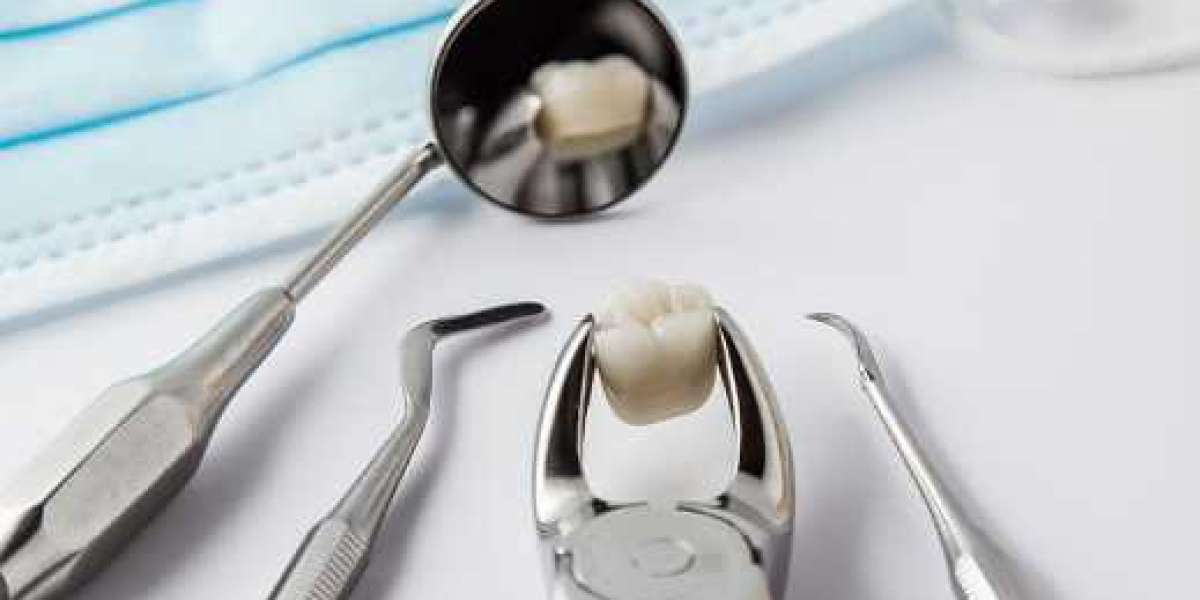Dental extractions are a common procedure in dental care, often necessary to maintain oral health or address specific dental issues. While the idea of having a tooth removed can be daunting, understanding the process, reasons, and aftercare can help alleviate concerns. This guide provides an in-depth look at Dental Extractions covering everything from the types of extractions and reasons for them to the procedure itself and post-extraction care.
What is a Dental Extraction?
A dental extraction is the process of removing a tooth from its socket in the bone. This can be necessary for various reasons, ranging from tooth decay and infection to overcrowding and trauma. There are two main types of dental extractions: simple and surgical.
Simple Extraction:
- A simple extraction is performed on a tooth that is visible in the mouth and can be removed easily. This procedure is usually done under local anesthesia by a general dentist.
Surgical Extraction:
- A surgical extraction is more complex and is often required for teeth that are not easily accessible, such as impacted wisdom teeth or teeth that have broken off at the gum line. This procedure may involve cutting into the gum and removing bone around the tooth. Surgical extractions are typically performed by an oral surgeon.
Reasons for Dental Extractions
There are several reasons why a dental extraction might be necessary:
Tooth Decay:
- When tooth decay reaches the center of the tooth (the pulp), it can lead to infection. If the infection is severe and cannot be treated with a root canal, extraction may be the best option to prevent the spread of infection.
Gum Disease:
- Advanced gum disease (periodontitis) can damage the tissues and bone surrounding the teeth. If a tooth becomes loose due to this damage, extraction might be necessary.
Impacted Teeth:
- Wisdom teeth, or third molars, often become impacted because they don't have enough room to emerge properly. Impacted teeth can cause pain, infection, and damage to adjacent teeth, making extraction necessary.
Overcrowding:
- In cases where there is not enough room in the mouth for all the teeth, one or more teeth may need to be removed to allow the others to align properly. This is common in preparation for orthodontic treatment.
Trauma:
- Teeth that are severely damaged due to injury or accident may need to be extracted if they cannot be repaired.
Infection or Risk of Infection:
- If a tooth becomes a potential source of infection due to a compromised immune system, such as in patients undergoing chemotherapy or an organ transplant, extraction may be recommended.
The Dental Extraction Procedure
The extraction process typically follows these steps:
Consultation and Examination:
- Your dentist will first conduct a thorough examination, including X-rays, to assess the condition of the tooth and surrounding bone. This helps determine the best method for extraction.
Anesthesia:
- Local anesthesia is administered to numb the area around the tooth. For more complex cases, sedation or general anesthesia may be used to ensure comfort during the procedure.
Tooth Removal:
- In a simple extraction, the dentist uses an elevator tool to loosen the tooth, followed by forceps to remove it. In a surgical extraction, the dentist may need to make an incision in the gum and remove bone to access the tooth.
Stitches and Gauze:
- If an incision was made, stitches may be required to close the gum. A gauze pad is placed over the extraction site to control bleeding and help form a blood clot.
Post-Extraction Care
Proper aftercare is crucial to ensure a smooth recovery and prevent complications such as infection or dry socket (a condition where the blood clot at the extraction site dislodges or dissolves, exposing bone and nerves). Here’s what to expect and how to care for the extraction site:
Managing Pain and Swelling:
- Pain is common after an extraction and can be managed with over-the-counter painkillers such as ibuprofen or acetaminophen. Your dentist may also prescribe stronger pain medication if necessary.
- Swelling can be minimized by applying an ice pack to the outside of your cheek for 10-20 minutes at a time during the first 24 hours.
Bleeding:
- It's normal to experience some bleeding immediately after the extraction. Bite down gently on the gauze pad provided by your dentist to control bleeding. Replace the gauze as needed until the bleeding stops, usually within a few hours.
Diet and Hydration:
- Stick to soft foods and avoid chewing on the extraction site for at least a few days. Drink plenty of fluids, but avoid using straws, as the suction can dislodge the blood clot.
Oral Hygiene:
- Keep your mouth clean, but avoid brushing the extraction site for the first 24 hours. Afterwards, rinse gently with warm salt water to help keep the area clean.
Activity Level:
- Avoid strenuous activity for the first 24-48 hours after the extraction to reduce the risk of increased bleeding or dislodging the clot.
Potential Complications
While dental extractions are generally safe, complications can arise:
Dry Socket:
- Dry socket is a painful condition that occurs if the blood clot at the extraction site is dislodged or fails to form. It can expose the bones and nerves, leading to severe pain. If you suspect dry socket, contact your dentist immediately for treatment.
Infection:
- Signs of infection include persistent pain, swelling, fever, and a foul taste in the mouth. If you experience these symptoms, seek prompt dental care.
Prolonged Bleeding:
- Some bleeding is normal, but if it continues for more than 24 hours, contact your dentist for advice.
Nerve Injury:
- In rare cases, especially with the removal of lower wisdom teeth, nerve injury can occur, leading to numbness in the tongue, lips, or chin. This is usually temporary, but in some cases, it may be permanent.
When to Contact Your Dentist
It's important to stay in touch with your dentist after an extraction, especially if you experience any of the following:
- Severe pain that is not relieved by prescribed medication
- Swelling that worsens after two to three days
- Prolonged bleeding or pus discharge from the extraction site
- Fever or signs of infection
Conclusion
Dental extractions, while sometimes necessary, are a routine procedure that can help maintain or restore oral health. By understanding the reasons for extractions, the steps involved in the procedure, and the importance of post-extraction care, you can approach the process with confidence and ensure a smooth recovery. Always consult with your dentist to address any concerns and to receive personalized advice based on your specific situation.








